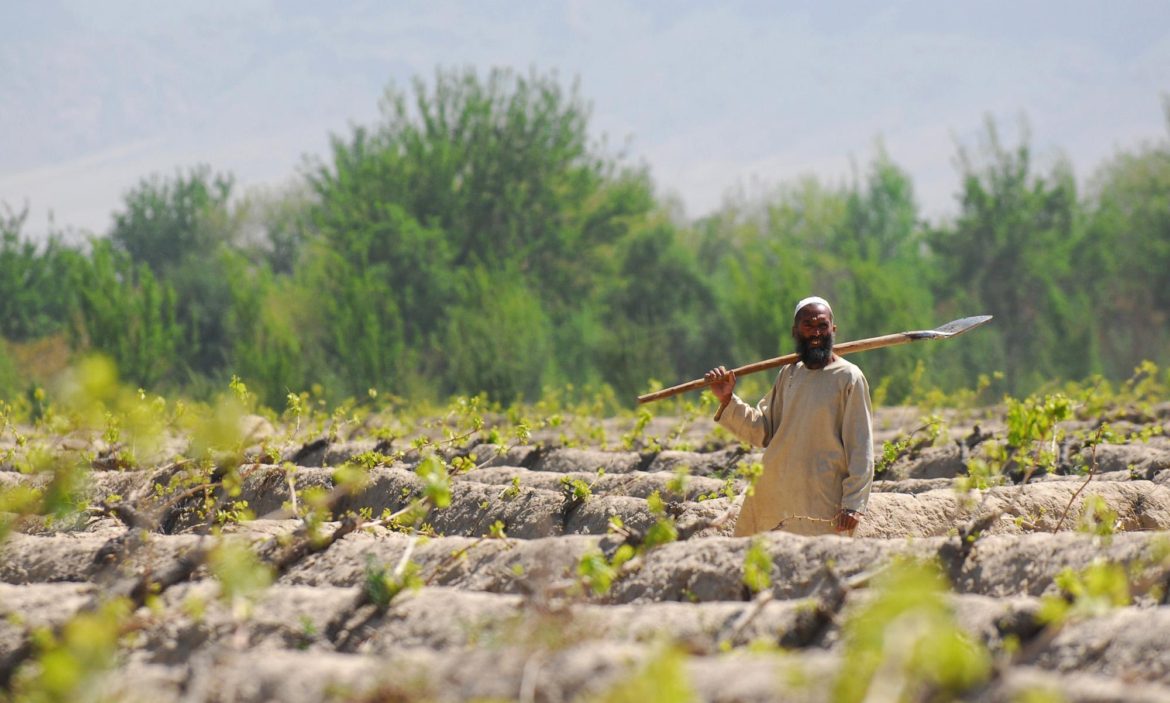Afghanistan is facing a major crisis as millions of Afghans risk running out of food before winter arrives. In August, the Taliban takeover exacerbated economic instability, causing an exponential increase in food prices and displacing 3.5 million Afghans. Afghanistan has faced decades of political unrest that has impaired crop production and consequently citizens’ access to food. In recent years, the effects of climate change have posed an additional threat to the farming industry. The patriarchal structure of Afghanistan causes the effects of food insecurity to be unequally distributed across society, placing women and children at higher risk for malnutrition.
Over the past three decades, floods and droughts have devastated Afghanistan’s agricultural sector. In 2019, Afghanistan ranked as the sixth most affected country by climate change. An estimated 40% of crops have been lost overall as a result of climate change. The ongoing climate pattern La Niña is projected to cause below-average precipitation this winter for the second successive year. The rapid melting of glaciers due to climate change is flooding irrigation systems and causing droughts in winters.
The Taliban has capitalized on the climate crisis to gain political power. As farmers struggle financially during droughts, many agricultural workers are pushed to borrow funds to survive. When they are unable to pay off lenders, they become indebted and struggle to afford food. Mobilizing public resentment towards the government, the Taliban are stepping in and capitalizing on farmers’ financial vulnerability as a recruitment tactic by offering greater financial stability. Additionally, the Taliban taxes farmers on their territory and controls the highly lucrative poppy trade, the most resistant crop to droughts owing to its relatively low water requirement. Poppy cultivation is most abundant in the country’s southern region, where the effects of climate change are most pronounced.
Gender-based discrimination creates an additional barrier to food access for Afghan women. Afghanistan’s patriarchal society places women under the subordination of men, treating them as legal minors. Women must rely on their husbands or fathers to provide them with the funds to purchase food, as men are generally in charge of the finances of the household. Women primarily occupy roles of food producers, creating a dual-dependency on men on one hand, and on unstable agricultural production on the other.
Higher rates of iron deficiencies, iodine deficiencies, and lower body-mass indexes found in women as a result of malnutrition have ramifications for the health of children as well. The culmination of cultural norms and the essentialization of gender roles result in moderate to severe levels of food insecurity worldwide, disproportionately affecting women.
The gendered effects of the hunger pandemic manifest themselves in women’s production of, access to, ability to afford, and consumption of food. Women in Afghanistan miss one more day of meals than men do as a result of the food insecurity crisis. Afghanistan ranks among the lowest countries according to the Gender Inequality Index. Women in Afghanistan are more likely than men to be impoverished, making it even more difficult for them to access food, especially in the current market where the price of wheat is up 25%.
Women’s access to the information and tools necessary to combat the food insecurity crisis is obstructed by their exclusion from education as well as the public sphere. Despite the considerable impact of the food shortage on women, they are underrepresented in global reports suggesting solutions to the issue. In a study of 73 global reports, only 5 of them suggested actions to resolve gender inequalities in the food system. Access to food and nutrition are being used as a means of controlling women’s autonomy, at the political level and in some cases the household level. To create an effective strategy to solve the hunger pandemic in Afghanistan, gender needs to be considered as a variable.
Amid war and the overthrowing of a government, climate change is likely to take the back burner in terms of urgent topics of debate. However, the climate emergency is largely responsible for the failure of Afghanistan’s agricultural system. As temperatures drop this winter and roads become covered in snow, international aid organizations such as the WHO actively supplying food to Afghanistan will struggle to deliver their donations. 1 in 3 Afghans are currently facing food insecurity, a number that could rise given the current state of the climate. Urgent climate policy change is necessary to prevent the situation from getting worse. The intersection between the climate crisis and women’s rights is apparent in Afghanistan, where the food crisis, worsened by climate change, disproportionately affects women. Taking action to tackle the climate crisis is a necessary step toward gender equality.
Edited by Aakanksha Mathur

Katie is in her first year at McGill, pursuing a double major in Psychology and Political Science. She is particularly interested in topics of feminist and environmental issues as well as sustainable development.

